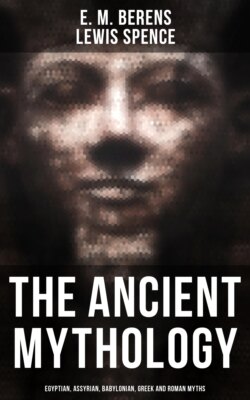Читать книгу The Ancient Mythology: Egyptian, Assyrian, Babylonian, Greek and Roman Myths - Lewis Spence - Страница 46
На сайте Литреса книга снята с продажи.
Totemism in Babylonian Religion
ОглавлениеSigns of totemism are not wanting in the Babylonian as in other religious systems. Many of the gods are pictured as riding upon the backs of certain animals, an almost certain indication that at one time they had themselves possessed the form of the animal they bestrode. Religious conservatism would probably not tolerate the immediate abolition of the totem-shape, so this means was taken of gradually 'shelving' it. But some gods retained animal form until comparatively late times. Thus the sun-god of Kis had the form of an eagle, and we find that Ishtar took as lovers a horse, an eagle, and a lion—surely gods who were represented in equine, aquiline, and leonine forms. The fish-form of Oannes, the god of wisdom, is certainly a relic of totemism. Some of the old ideographic representations of the names of the gods are eloquent of a totemic connexion. Thus the name of Ea, the god of the deep, is expressed by an ideograph which signifies 'antelope.' Ea is spoken of as 'the antelope of the deep,' 'the lusty antelope,' and so forth. He was also, as a water-god, connected with the serpent, a universal symbol of the flowing stream. The strange god Uz, probably an Akkadian survival, was worshipped under the form of a goat. The sun-god of Nippur, Adar, was connected with the pig, and was called 'lord of the swine.' Merodach may have been a bull-god. In early astronomical literature we find him alluded to as 'the bull of light.' The storm-god Zu, as is seen by his myth, retained his bird-like form. Another name of the storm-bird was Lugalbanda, patron god of the city of Marad, near Sippara. Like Prometheus—also once a bird-god, as is proved by many analogous myths—he stole the sacred fire from heaven for the service and mental illumination of man.
